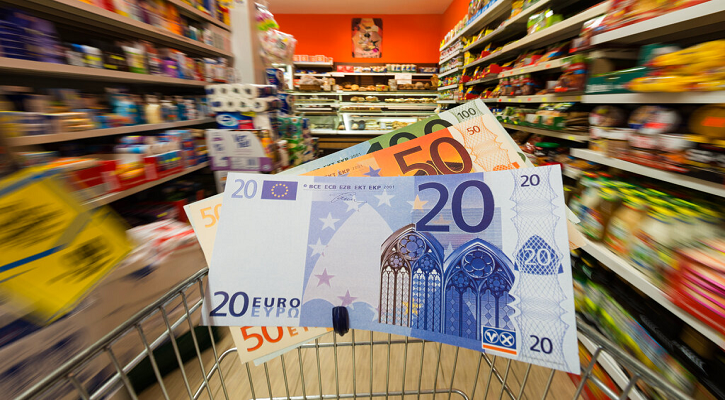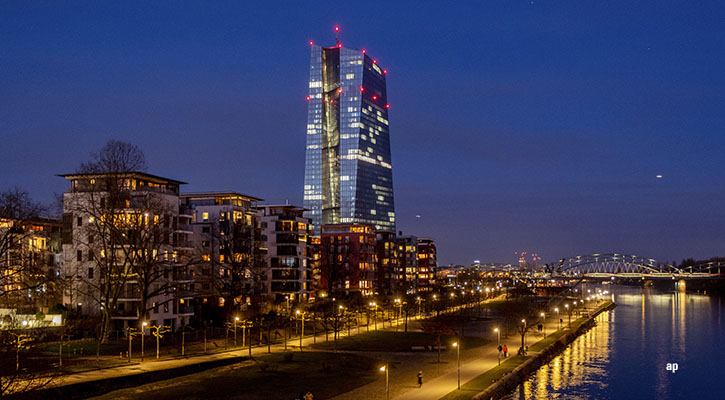
Markets look to flash inflation figures for the euro area that are due by Eurostat at 11am Central European Time on Wednesday July 31, after prices increased by a higher-than-expected 2.5% year on year in June. One year prior, the rate had been 5.5%.
Inflation is forecast to remain stable at 2.5% in July, according to FactSet consensus estimates. Core inflation, which excludes volatile food and energy prices, is expected to have fallen at 2.8% year on year from 2.9% in June.
"Inflation in the eurozone has been hovering at or around the 2.5% mark since February this year. July's inflation print is unlikely to move by much in either direction, with sticky services inflation taking its time to fall," said Michael Field, European market strategist at Morningstar.
In June 2024, the greatest contributors to the annual euro area inflation rate (HICP) were services (+1.84 percentage points, pp), followed by food, alcohol & tobacco (+0.48 pp), non-energy industrial goods (+0.17 pp) and energy (+0.02 pp).
Why is Eurozone Inflation So Sticky?
The June headline inflation reading of 2.5% year-on-year is in line with the average inflation readings reported since the start of the year.
"A key reason for the rather sluggish and volatile disinflation process is stubbornly high services inflation that is stuck at around 4% year-on-year since November," Martin Wolburg, senior economist at Generali Investments, told Morningstar.
"However, it is currently also boosted by price increases ahead of the summer holiday season, with package holidays and accommodation showed strong price hikes in June. In the months to come this will peter out again."
With the Paris Olympics in full swing, investors are wondering whether the games will affect inflation via an increase in hotel, restaurant and taxi prices. According to a Nomura report released on July 24, a spike in the cost of living is unlikely.
"The impact of the Olympics on inflation data will likely be small. Looking back at past Olympics and similar sporting events, official data rarely reflect a large shock to services inflation and other economic variables," they said in the note.
Where Will Inflation Be at the End of the Year?
"In the third quarter, we see headline inflation coming close to the 2% threshold," Generali's Wolburg anticipates.
"However, the elephant in the room remains wage growth. We expect it to cool on the back of a less strong labour market and ebbing inflation pressure. But disinflation will remain a cumbersome process that could easily be overshadowed by one-off effects."
Will the ECB Cut Interest Rates in September?
After June's initial rate cut, the European Central Bank left interest rates unchanged at its July 18 meeting, but the markets expect another cut in September.
"Although headline inflation is just 50 basis points above the ECB's targeted level, core inflation is higher again, at close to 3%," Field adds.
"ECB forecasts suggest this may take until 2026 to hit the magic 2% level, but we don't believe this will stop the ECB from cutting rates further in the meantime. Rates remain high at 3.75%, giving the ECB plenty of room for maneuver."
According to Ulrike Kastens, European economist at DWS, ECB statements on inflation "remain balanced."
"In our view, the ECB is awaiting further data, particularly a slowdown in wage growth. This could leave room for further easing of monetary policy restrictions. We still expect the next interest rate cut in September," she said in a note on July 18.



























